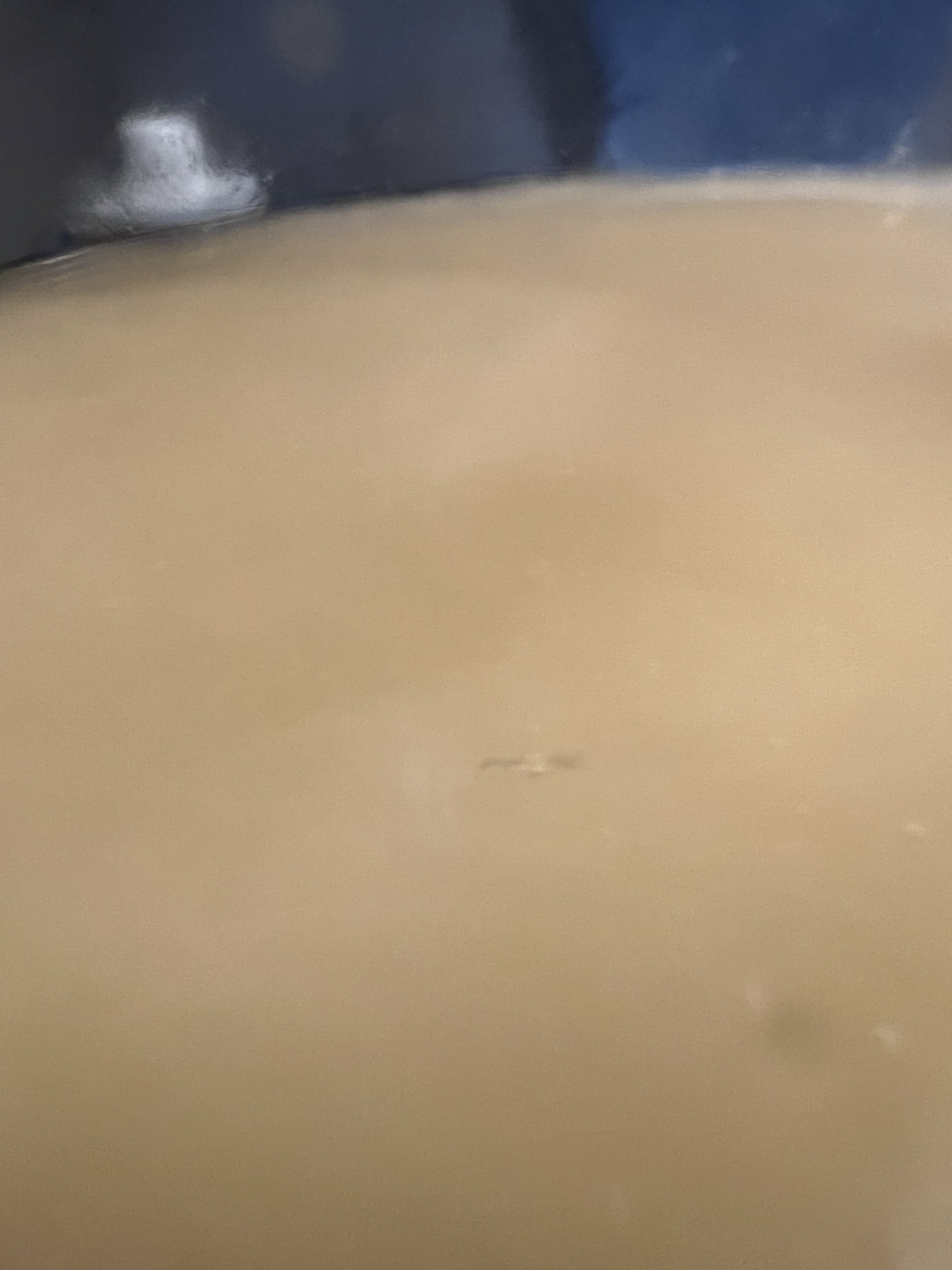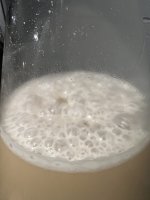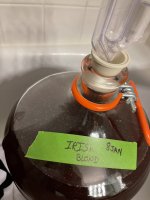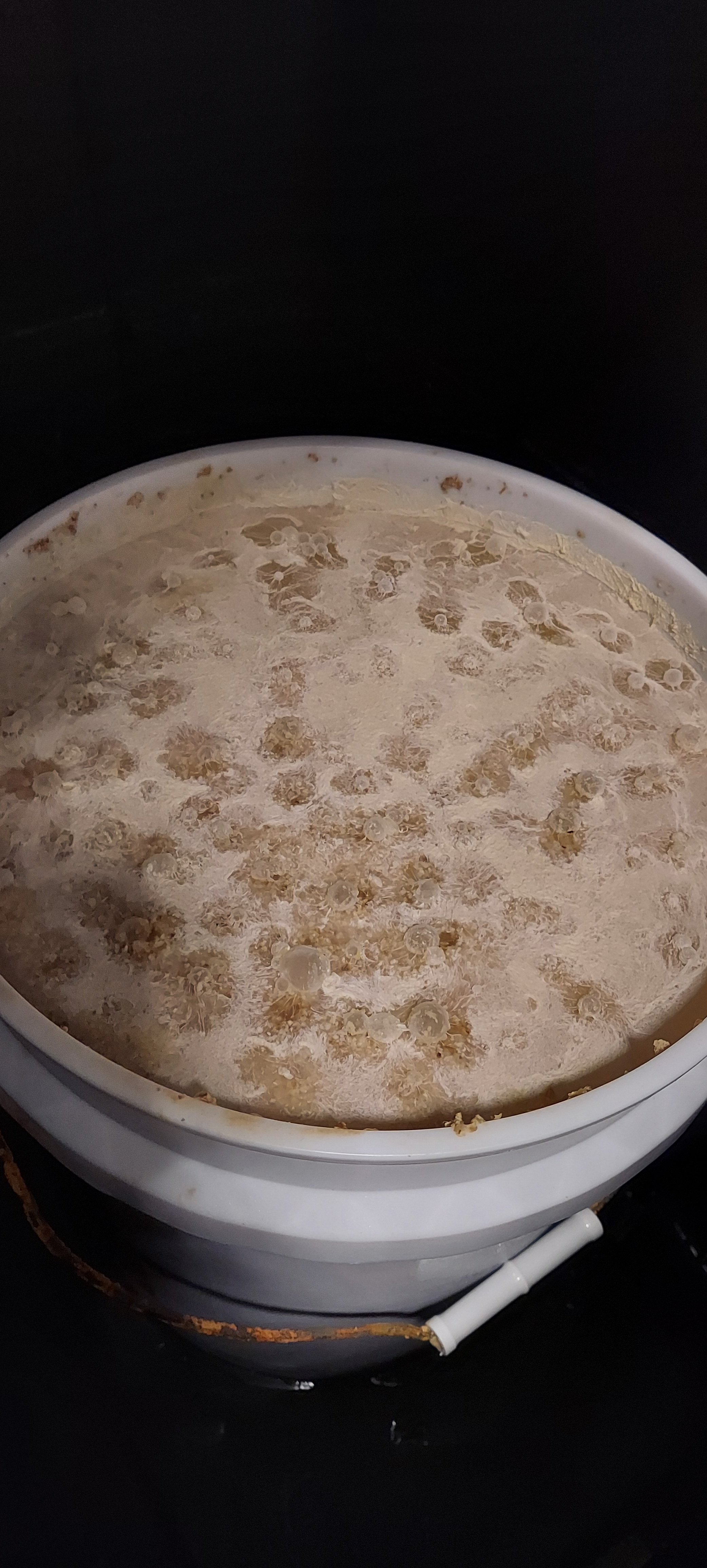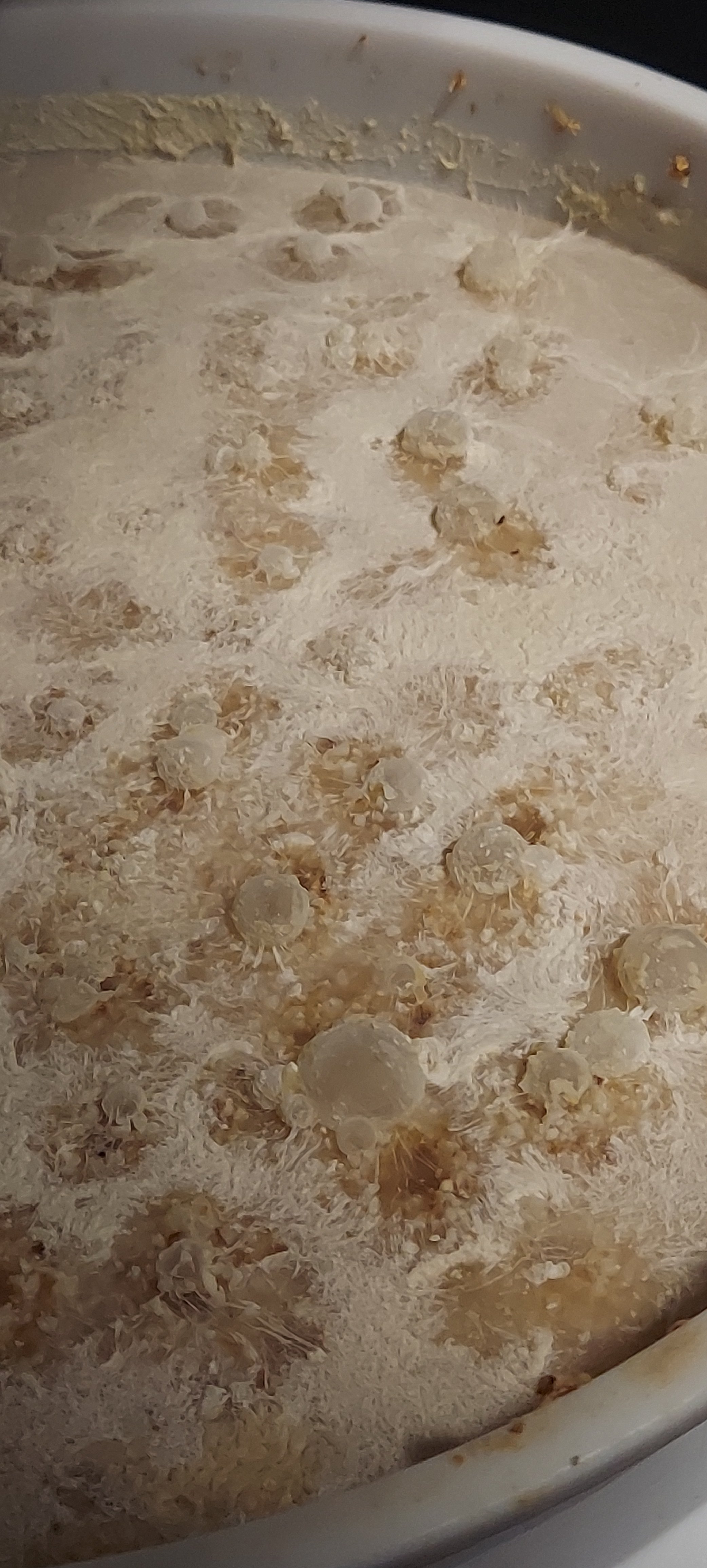Heat pasteurization, depending on temperature and duration, may kill the "bugs" but also (negatively) affect how the beer tastes. I've never tried it, or read much about it. Please let us know how that panned out.beer still tasted good so racked it off the yeast, pasteurised it, chilled it then popped it into a sanitised FV with a tonne of dry hops
fingers crossed.
That bucket needs a through cleaning...
I would use hot (homemade) PBW or Oxiclean (Free), scrubbing/rubbing the insides with a non-scratching nylon brush, non-abrasive (scouring) pad or washcloth. You don't want to scratch it, just have some extra friction when rubbing to remove any biofilm that may cling to the walls, bottom, rim, etc. Don't forget the lid, and groove.
You could add a small amount (~1/4 tsp per gallon) of Lye (drain opener) to your PBW/Oxi for some extra oomph, but beware, wear proper face/eye protection and rubber gloves when using lye, even diluted, it's very caustic. It dissolves skin and even a small splash in the eye needs to be washed out immediately and thoroughly, and requires immediate doctor's attention as it could cause blindness.
Then after rinsing, some "bleach bombing" afterward, and/or set outside propped, so bright sunlight can shine inside on all sides. UV light kills lots of nasties. Right now I have 2 buckets outside, propped under a ~45° angle facing the bright midday sun for over a week. Probably overkill, but I want to make sure. After transferring the beer, I hadn't cleaned them right away, and forgot about them, then discovered something nasty started growing inside...


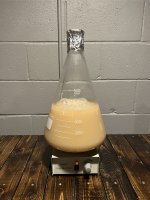


















































![Craft A Brew - Safale BE-256 Yeast - Fermentis - Belgian Ale Dry Yeast - For Belgian & Strong Ales - Ingredients for Home Brewing - Beer Making Supplies - [3 Pack]](https://m.media-amazon.com/images/I/51bcKEwQmWL._SL500_.jpg)




